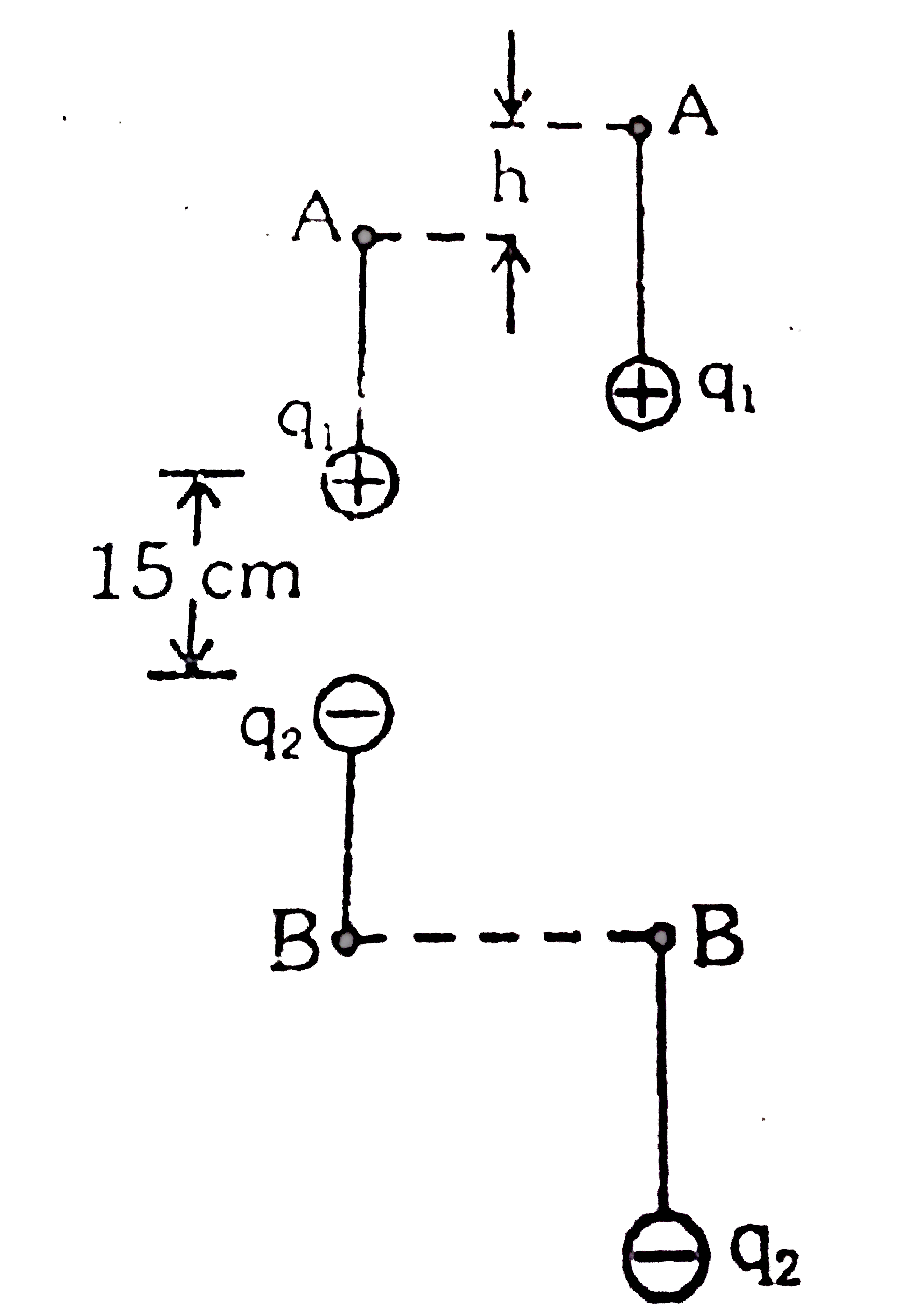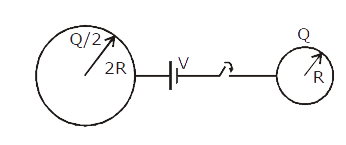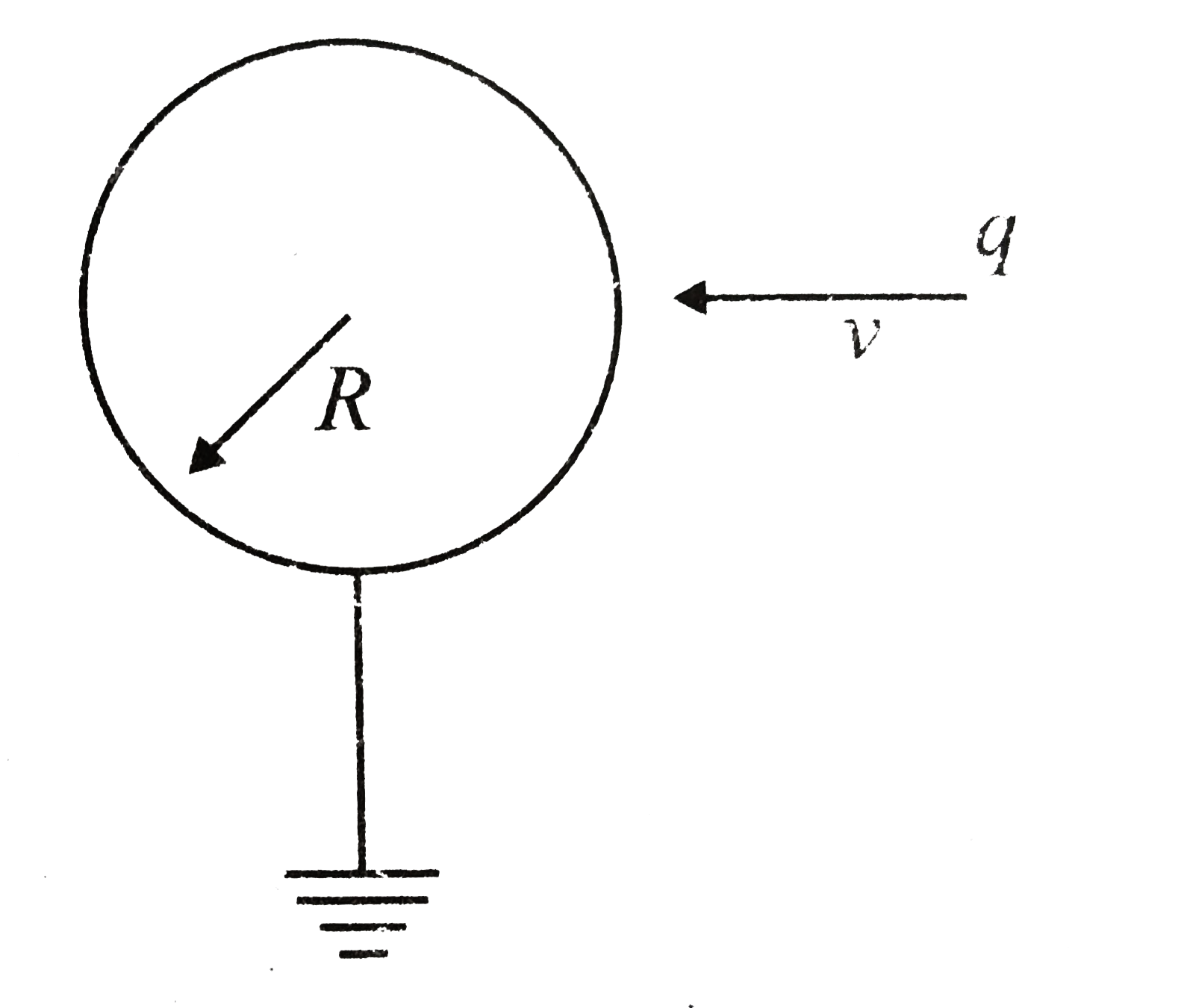Two small insulating spheres are attached to silk threads. The spheres have equal masses of 40g and have electric charges of q1=+2.0μC and q2=−2.0μC. The spheres are brought into the initial positions shown in Figure(a), with a vertical separation of 15cm between them. In figure, the upper thread is slowly pulled upward, while point B is kept fixed. When point a has been raised through a height h, the lower sphere suddenly falls, as shown in Figure (b). The height h, is closest to:

9 cm
11 cm
13 cm
15 cm
The correct Answer is:D
Kq1q2(0.15+h)2=mg
h=0.15m or 15cm
Topper's Solved these Questions
- BOOK - ALLENCHAPTER - MISCELLANEOUSEXERCISE - Exersice-037videos
MISCELLANEOUS
- BOOK - ALLENCHAPTER - MISCELLANEOUSEXERCISE - ASSERTION-REASON18videos
MISCELLANEOUS
- BOOK - ALLENCHAPTER - MISCELLANEOUSEXERCISE - Part -II Example Some worked out Examples1videos
MISCELLANEOUS
- BOOK - ALLENCHAPTER - KINEMATICS (MOTION ALONG A STRAIGHT LINE AND MOTION IN A PLANE)EXERCISE - BEGINNER S BOX-78videos
KINEMATICS (MOTION ALONG A STRAIGHT LINE AND MOTION IN A PLANE)
- BOOK - ALLENCHAPTER - PHYSICAL WORLD, UNITS AND DIMENSIONS & ERRORS IN MEASUREMENT EXERCISE - EXERCISE-IV8videos
PHYSICAL WORLD, UNITS AND DIMENSIONS & ERRORS IN MEASUREMENT
Similar Questions
A sphere carrying a charge of −20μC is placed at a certain distance from another identical sphere carrying a charge of +80μC.The two spheres are brought in contact, separated and kept in their original positions.The ratio of the forces between them before and after they are in contact is
View SolutionPoint charges q1=4 μC and q2 = -2 μC are kept at point x = 0 and x = 4 respectively , electrical potential will be zero at points (where x is in cm)
View Solution
Knowledge Check
- Question 1 - Select One
A positive point charge q is brought near a neutral metal sphere.
AThe sphere becomes negatively charges.BThe sphere becomes positively charged.CThe interior remains neutral and the surface gets non-uniform charge distribution.DThe interior becomes positively charged and the surface becomes negatively charged. - Question 2 - Select One
Two spheres of equal mass A and B are given +q and -q charge respectively then
Amass of A increasesBmass of B increasesCmass of A remains constantDmass of B decreases - Question 3 - Select One
The insulated spheres of radii R1 and R2 having charges Q1 and Q2 respectively are connected to each other. There is
ANo change in the energy of the systemBAn increase in the energy of the systemCAlways a decrease in the energy of the systemDA decrease in the energy of the system unless
Q1R2=Q2R1
There are two spheres of radii R and 2R having charges Q and Q2 respectively. These two spheres are connected with a cell of emf V volts as shown in figure. When switch is closed, the final charge on sphere of radius 2R is Q+8πε0RVn . Then find the value of n.
 View Solution
View SolutionPoint charge q1=2μC and q2=−1μC are kept at points x=0 and x=6 respectively. Electrical potential will be zero at points
View SolutionTwo point charge q1=2μC and q2=1μC are placed at distance b=1 and a=2cm from the origin on the y and x axes as shown in figure .The electric field vector at point (a),(b) will subtnd on angle θ with the "x-axis" given by
 View Solution
View SolutionTwo tiny conducting spheres are identical any carry charges of −20.0μC and +50.0μC. They are separated by a distance of 2.50 cm. The spheres are brought into contact and then separated to a distance of 2.50 cm. Determine the magnitude of the force that each sphere now experiences, and state whether the force is attractive or repulsive.
View SolutionA charged particle having a positive charge q approaches a grounded metallic spheres of raidus R with a constant small speed v as shown in figure. In this situation
 View Solution
View Solution
